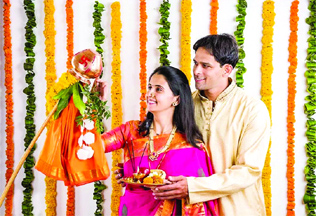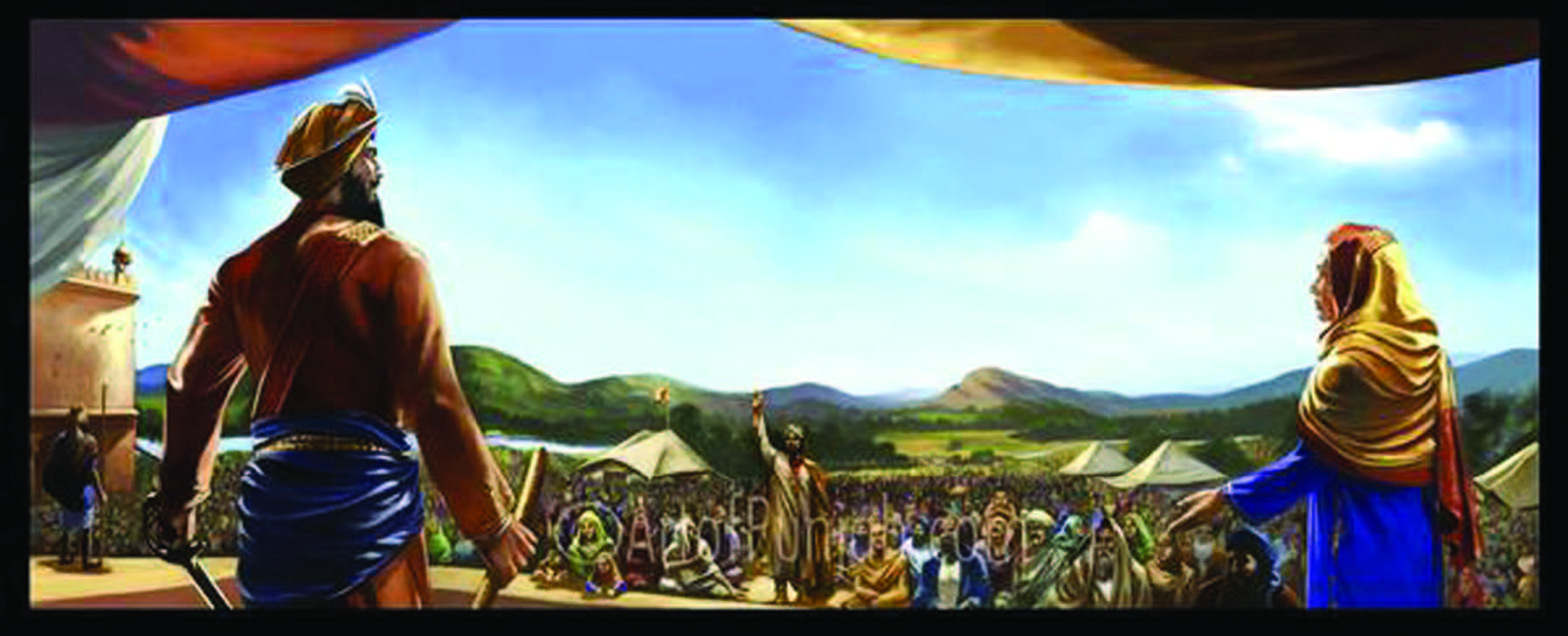
Gudi Padwa is a vibrant festival celebrated predominantly in Maharashtra, marking the beginning of the Hindu New Year. It is observed on the first day of the Chaitra month according to the Hindu lunisolar calendar, which usually falls in March or April. This auspicious occasion is also known as Samvatsar Padvo in some regions and is celebrated with great enthusiasm and devotion.
Significance of Gudi Padwa
Gudi Padwa holds immense cultural and religious significance. It is believed to commemorate the day when Lord Brahma created the universe. According to Hindu mythology, this day also marks the victory of Lord Rama over Ravana, symbolizing the triumph of good over evil. The festival is considered highly auspicious for new beginnings, making it a popular time for starting new ventures and making important life decisions.
Traditional Celebrations
The festival is observed with various customs and traditions, including:
Raising the Gudi
A ‘Gudi’ is a decorated flag-like arrangement that consists of a bamboo stick adorned with a bright silk cloth, neem leaves, mango leaves, and a garland of flowers. A copper or silver pot is placed upside down on top of the stick, symbolizing victory and prosperity. This Gudi is hoisted outside homes, especially near the entrance, as a harbinger of good fortune and success.
Rangoli and Festive Decorations
Homes are thoroughly cleaned and beautifully decorated with intricate rangoli designs at the entrance. Mango leaves and marigold flowers are used to adorn doors and windows, creating a festive atmosphere.
Special Festive Foods
Traditional dishes play a crucial role in the Gudi Padwa celebrations. One of the most popular delicacies prepared on this occasion is Puran Poli, a sweet flatbread stuffed with a mixture of jaggery and lentils. Another special dish is Shrikhand with Puri, which adds sweetness to the celebrations. A unique part of the festival is consuming a mixture of neem leaves, jaggery, and tamarind, symbolizing the balance of life’s bitter and sweet experiences.
Prayers and Cultural Events
Devotees visit temples to offer prayers and seek blessings for prosperity and happiness. Many cultural programs, processions, and traditional dance performances are organized, showcasing the rich heritage of Maharashtra.
Gudi Padwa and Chaitra Navratri
Gudi Padwa also marks the beginning of Chaitra Navratri, a nine-day festival dedicated to the worship of Goddess Durga. This Navratri, also known as Vasant Navratri, is an important time for spiritual devotion and fasting. Devotees observe fasts, perform pujas, and recite scriptures such as the Durga Saptashati to seek divine blessings. Each day of Navratri is dedicated to a different form of Goddess Durga, culminating in Ram Navami, the birthday of Lord Rama. The connection between Gudi Padwa and Chaitra Navratri signifies the renewal of life, purity, and spiritual awakening.
Rituals of Chaitra Navratri
– Kalash Sthapana (Ghatasthapana): The festival begins with the installation of a sacred pot (kalash) filled with water and topped with mango leaves and a coconut, symbolizing prosperity and divine energy.
– Nine Days of Worship: Each of the nine days is dedicated to a different form of Goddess Durga, such as Shailaputri, Brahmacharini, Chandraghanta, Kushmanda, Skandamata, Katyayani, Kalaratri, Mahagauri, and Siddhidatri.
– Fasting and Devotion: Many devotees observe fasts, consuming only fruits and milk, while others follow a sattvic diet without onions, garlic, or non-vegetarian food.
– Kanya Pujan: On the eighth or ninth day, young girls, symbolizing the divine feminine energy, are worshiped and offered food and gifts as a mark of reverence.
– Ram Navami Celebrations: The ninth day coincides with Ram Navami, celebrating the birth of Lord Rama. Devotees chant hymns, read the Ramayana, and visit temples to offer prayers.
Regional Variations
While Gudi Padwa is widely celebrated in Maharashtra, other Indian states also observe the Hindu New Year in different ways:
– Ugadi in Karnataka, Telangana, and Andhra Pradesh
– Cheti Chand among the Sindhi community
– Navreh in Kashmir
– Puthandu in Tamil Nadu
– Vishu in Kerala
Gudi Padwa is a festival that brings together tradition, joy, and hope for a prosperous year ahead. It is a time to embrace new beginnings, cherish cultural heritage, and celebrate the spirit of victory and renewal. Whether through vibrant decorations, delicious food, or sacred rituals, the essence of Gudi Padwa remains a reminder of the cyclical nature of life and the promise of a bright future. With the festival also marking the beginning of Chaitra Navratri, it adds an extra layer of devotion and celebration, reinforcing spiritual significance and the power of new beginnings. The observance of Chaitra Navratri alongside Gudi Padwa amplifies the spiritual energy of this period, making it a truly auspicious time for prayers, reflection, and seeking divine blessings.
Importance of Gudi Padwa
Gudi Padwa marks the arrival of spring and the harvesting of Rabi crops. This festival is associated with the mythological day that Lord Brahma created the universe on this day. In this, not only Brahmaji and the main gods and goddesses of the creation created by him, Yaksha-demons, Gandharvas, sages, rivers, mountains, animals-birds and insects, diseases and their remedies are also worshiped. . New Samvatsara starts from this day. Hence this date is also called ‘Nav Samvatsara’.
In Andhra Pradesh, Karnataka and Maharashtra, all the houses are decorated with turbans from the leaves of the mango tree. Along with the desire for a happy life, this bandanavar is also a sign of prosperity, and a good harvest. Panchang is prepared on the day of ‘Ugadi’. The great mathematician Bhaskaracharya composed the ‘Panchang’, calculating the day, month and year from sunrise to sunset from this day.
Beliefs related to Gudi Padwa
A potter’s boy named Shalivahan created an army of clay soldiers and by sprinkling water on them breathed life into them and with the help of this army defeated the mighty enemies. Shalivahana Saka started as a symbol of this victory.
It is believed that on this day Lord Rama liberated the people of the south from the tyrannical rule of Vanaraja Bali. The people who were freed from the troubles of Bali hoisted the flag after celebrating from house to house. Even today the practice of erecting Gudi in the courtyard of the house is prevalent in Maharashtra. That is why this day was named as Gudipadwa.





Be the first to comment